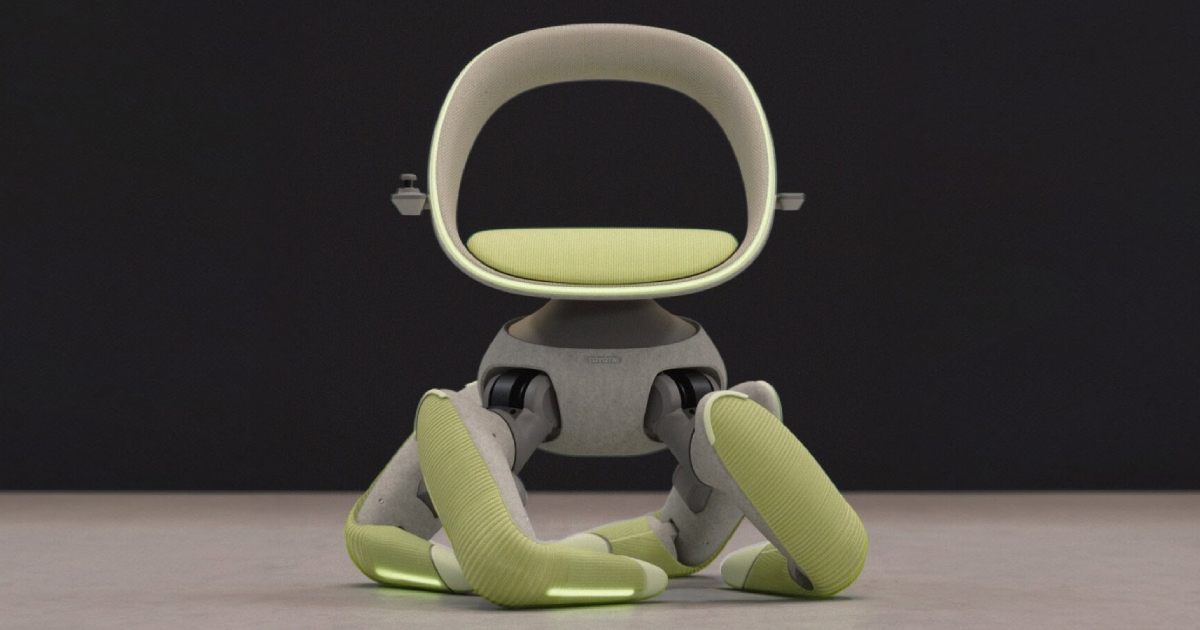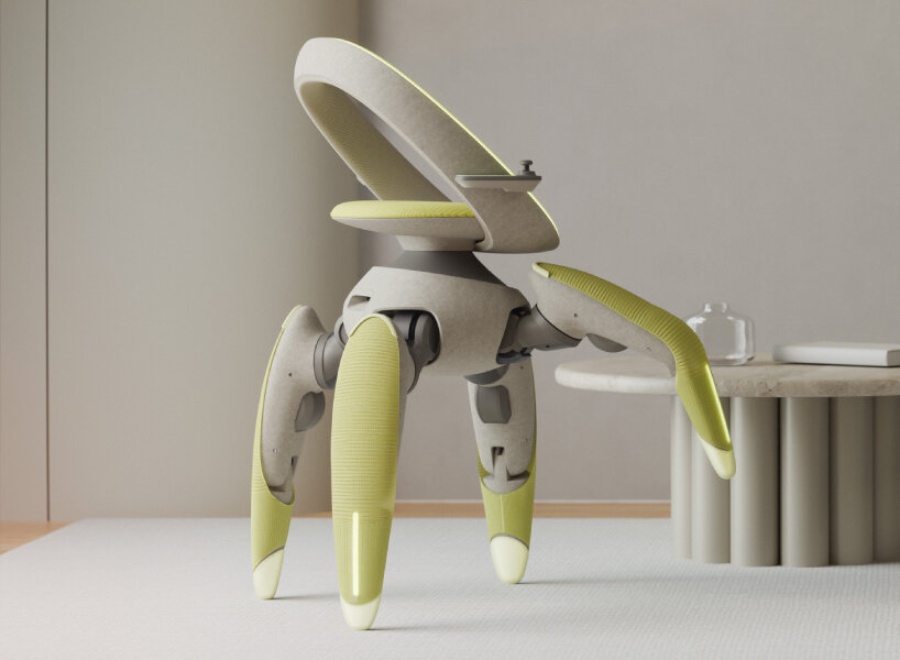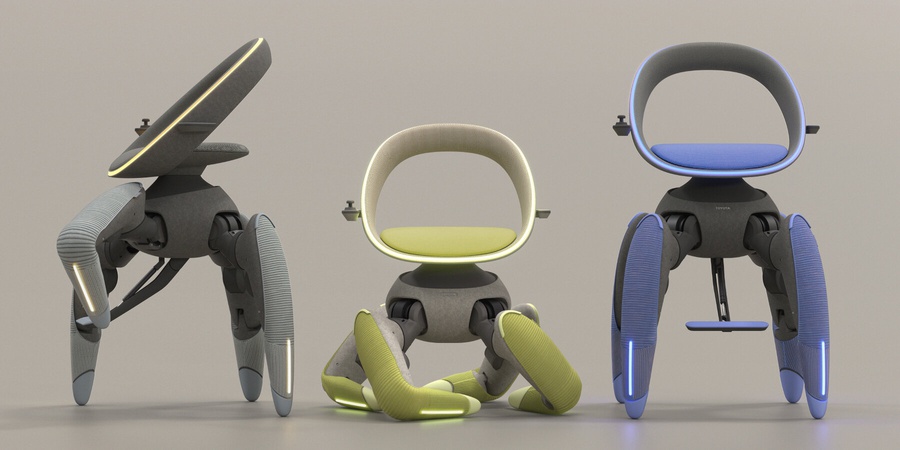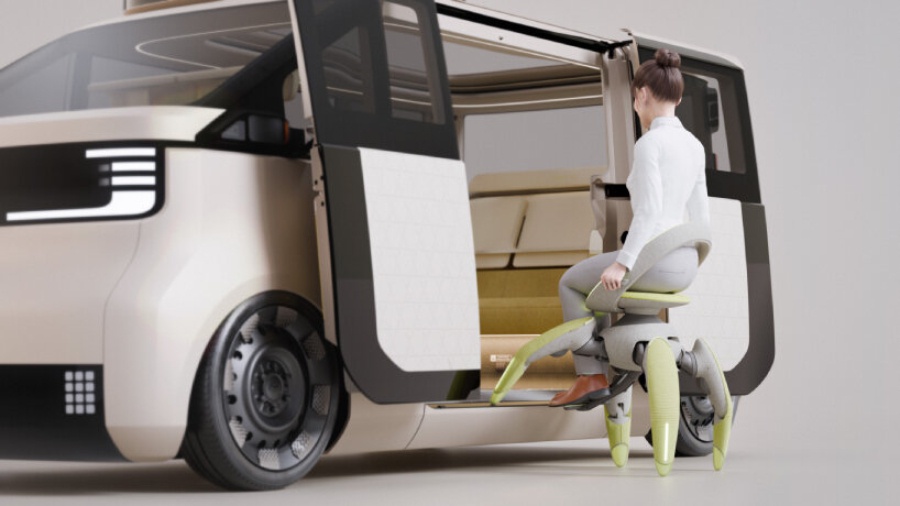Walk Me was developed for people with limited mobility, but instead of two wheels, four robotic "legs" are installed. Similar to the movement sequence of living beings, each leg can bend, climb, and balance independently. They enable smooth movement on gravel, stairs, and uneven surfaces while maintaining the user's stability.
For maximum comfort, the legs of the device are wrapped with soft material, and sensors and LiDAR scan the surroundings to detect obstacles, stairs, and other terrain features. An intelligent system ensures stability and provides an immediate stop in case of a collision with an object in the path.
The seat inside Walk Me conforms to the user's body shape, equipped with an ergonomic backrest and side control handles. With their help, the movement direction can be specified to complement the voice control options: it is enough to say "go to the kitchen" or "go faster."
The built-in computer calculates the route, displays speed, battery charge, and walking statistics on the screen in the armrest. The battery is hidden behind the backrest of the chair. It ensures the device's operation during the day and is charged via the power grid. In case of overheating of the accumulator, the device shuts down.
Another feature of Walk Me is the folding capability. With a push of a button, the chair transforms into a suitcase that can be conveniently transported in the car or stored at home. Once turned on, Walk Me unfolds again and is ready for use.
Toyota positions Walk Me as a solution for real-life conditions: narrow corridors, stairs, and streets. Currently, it is only a prototype, but the project shows Toyota's ambition for development in robotics.
Source: Designboom




